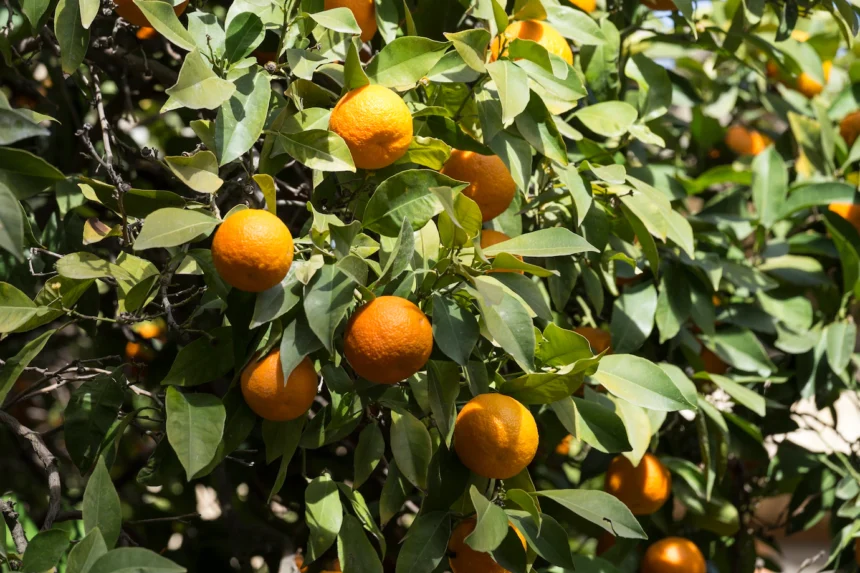Citrus greening, also known as Huanglongbing (HLB), is a devastating disease that affects citrus trees, including oranges. It is caused by a bacterium called Candidatus Liberibacter spp. and is primarily spread by a tiny insect called the Asian citrus psyllid. Citrus greening can lead to stunted growth, reduced fruit yield, and eventually the death of the tree. Here are some symptoms of citrus greening to look out for in oranges:
- Yellow shoots and leaves: One of the early symptoms of citrus greening is the yellowing of new shoots and leaves. The yellowing usually starts from the tip and progresses downwards. Infected leaves may also have asymmetrical blotchy mottling.
- Misshapen and lopsided fruits: Infected oranges may develop irregular shapes and become lopsided. The fruit may be small, underdeveloped, and have an uneven color distribution. The fruit may also have a bitter taste and premature drop from the tree.
- Vein yellowing: The veins on the leaves of infected orange trees may turn yellow while the rest of the leaf remains green. This is often referred to as “vein clearing.”
- Patterned chlorosis: Citrus greening can cause a distinct pattern of yellowing on the leaves. Yellow patches or sectors may appear alongside green areas, giving the leaves a mottled or variegated appearance.
- Root decline: As the disease progresses, the root system of infected trees may start to deteriorate. This can lead to a decline in the overall health of the tree, including reduced water and nutrient uptake, which further exacerbates the symptoms.
It’s important to note that these symptoms can also be caused by other factors, such as nutrient deficiencies or other diseases. If you observe any of these symptoms in your orange trees, it is recommended to consult with a local agricultural extension service, horticulturist, or plant pathologist to confirm the diagnosis and receive appropriate management recommendations. Early detection and prompt action are crucial in managing citrus greening effectively.
Join 'Farmers Mag' WhatsApp Channel
Get the latest Farming news and tips delivered straight to your WhatsApp
CLICK HERE TO JOIN






